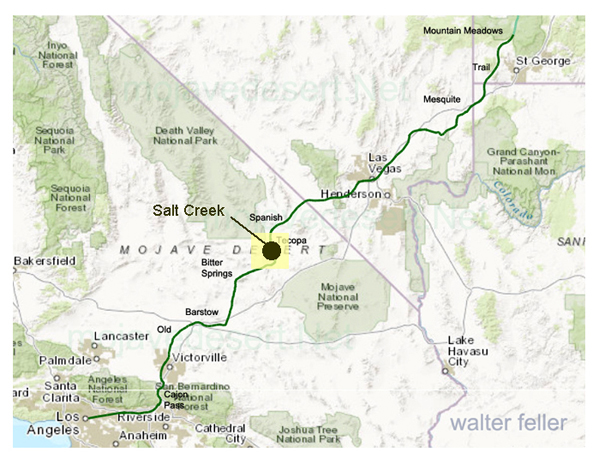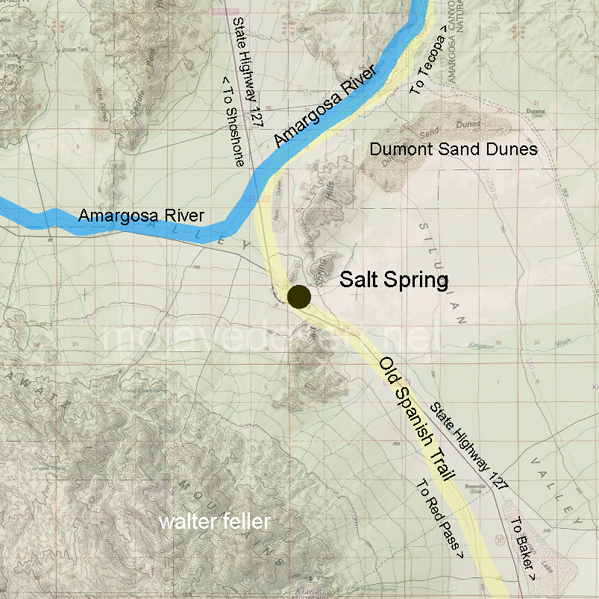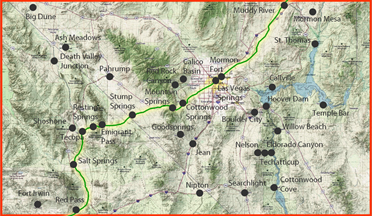Salt Springs

In 1849, Jefferson Hunt led Mormon wagons along the Old Spanish Trail (Mormon Road, Santa Fe and Salt Lake Trail) and camped at Salt Creek. Hunt's party discovered gold at Salt Creek and soon gold fever hit southern California.
Several prospecting expeditions came into this region, one which included B. D. Wilson, who later became mayor of Los Angeles. A group from San Francisco organized the Desert Mining Company and a Southern California group organized the Los Angeles Mining Company. The two groups mined Salt Creek side by side.
During the winter of 1850, the Chessman wagon train passed through.and noted that miners were working a quartz ledge 1/8 mile from the road. Mining here was sporadic. The Salt Springs Mining Company pulled out after selling to foreign capitalists in July 1852. The Desert Mining Company and other mines had ceased operations by August 15, 1853.
In September 1860, three arrastras were operating at the location and ore was yielding $2500 a ton (30 men working). The Amargosa Gold & Silver Mining Company of San Francisco acquired the mines in fall of 1863 and installed a new mill. During the mid-1860s a new company took over and operated the mine and a five-stamp mill. This operation had closed by 1870. In September 1881, J. M. Seymore sold the mine to the South Pacific Mining Company of New York. An attempt was made to reopen the mine in 1920, but the venture was abandoned.
Also see: Historic Salt Creek Mining District



Salt Creek, another significant location along the Old Spanish Trail, played a crucial role for travelers on this historic route. The Old Spanish Trail, which connected Santa Fe in New Mexico with Los Angeles in California, traversed a variety of terrains, including arid deserts, rugged mountains, and challenging river crossings.
Salt Creek, much like other water sources along the trail such as Bitter Springs, was a critical spot for obtaining water in the otherwise dry and harsh environment of the desert regions. The presence of water sources like Salt Creek was essential for the survival of both people and animals making the long journey. These creeks and springs provided necessary hydration in an environment where water was scarce and precious.
The trail was used for trade, exploration, and by settlers moving westward. It was especially important for the trade of goods such as woolen items and horses between New Mexico and California. The journey along the Old Spanish Trail was arduous and dangerous, with threats from the harsh environment, as well as potential conflicts with Native American tribes.
Salt Creek, like other locations along the trail, would have been a welcome sight to travelers. However, the quality of the water could vary. In some places, the water might have been saline or otherwise not ideal for drinking, but it was still a crucial resource in the desert.
Today, the legacy of the Old Spanish Trail, including places like Salt Creek, is preserved as a part of American history. These sites provide insight into the early exploration and settlement of the American West and the endurance of those who traveled this challenging route.
